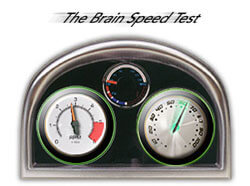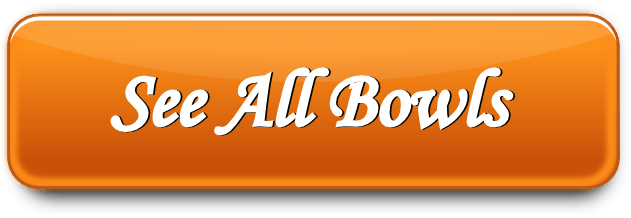Besides playing lovely sounds, you may be wondering “What are singing bowls used for?” Singing bowl therapy is a modern way of describing an ancient sound healing practice. Modern because the term “singing bowl” is modern, ancient because the use of metallic objects to produce healing sounds goes back millennia. Addressing physical and psychological issues through the use of sound has moved from the purely esoteric to the area known as CAM (complementary and alternative medicine). Sound healing studies are being done and positive results have been reported. Because of their unique sonic characteristics, singing bowls’ healing properties are a part of this wider exploration.
Singing Bowl Therapy for PTSD
 In Boston Dr Michael Grodin has been using Tibetan singing bowls as part of a therapeutic regime for relieving post-traumatic stress disorder (PTSD) in Tibetan monk refugees. The sound of the singing bowls is used to help reconnect the monks with their heart energies for complete sound healing.
In Boston Dr Michael Grodin has been using Tibetan singing bowls as part of a therapeutic regime for relieving post-traumatic stress disorder (PTSD) in Tibetan monk refugees. The sound of the singing bowls is used to help reconnect the monks with their heart energies for complete sound healing.
Dr. Grodin uses the sound therapy singing bowls both in traditional ways, as cues into and out of meditation, and in a more Western way akin to the “sound bath” described below.
This example of Tibetan sound bowl therapy shows that the bowls can be used to facilitate emotional balancing, an aspect of sound healing.
Tibetan Singing Bowl Healing
Buddhist body-oriented psychotherapist Victoria (Tory) Wolf Capron has a practice in Boulder, Co. where she uses the sounds of Tibetan singing bowls, crystal bowls, and gongs. Her Golden Bowl Sangha combines Buddhist teachings, nature spirituality, shamanic journeying, western psychology, and a supportive community. Tory finds when one is working on expanding one’s awareness out into space the sound of the gong, following the sound out into space, is very helpful. She uses Tibetan singing bowl sounds as a way for students to feel energy, move it in their chakras, and help them become embodied and spacious at the same time.
Boost Your Brain Power
There are some very interesting studies linking the ability to distinguish and sequence tones to improved memory and mental clarity. The underlying mechanism might well be as simple as the process of listening enhances blood flow to the parts of the brain that support these capabilities.
 My own experience with singing bowl sound therapy is that they are wonderful tools for improving mental clarity and powers of concentration. There are times when I spend hours ringing bowls intensely focused on discerning the sounds and I’d have to say that I come out of these periods with a sort of renewed mental vigor. Posit Science, one of the leading companies in the “brain improvement” market has a brain speed test using tones you can try on the internet as well as a research section where you can find articles on the subject. Learn more about the science of sound therapy singing bowls below.
My own experience with singing bowl sound therapy is that they are wonderful tools for improving mental clarity and powers of concentration. There are times when I spend hours ringing bowls intensely focused on discerning the sounds and I’d have to say that I come out of these periods with a sort of renewed mental vigor. Posit Science, one of the leading companies in the “brain improvement” market has a brain speed test using tones you can try on the internet as well as a research section where you can find articles on the subject. Learn more about the science of sound therapy singing bowls below.
The Tomatis Method
One of the most respected pioneers of sound healing therapy was Alfred Tomatis a French doctor who died in 2001 after a long career. Tomatis believed that improving the ability to perceive fine distinctions in sound could provide relief for a wide variety of ailments. He theorized that people lost the ability to hear specific frequencies due to associated trauma and exposure to overly loud noise, especially in young children. The loss of the ability to hear these frequencies was caused by muscles in the inner ear that no longer operated within their full range of motion.
Tomatis developed sonic equipment and used music to re-train people’s minds and loosen frozen muscles in the inner ear. His methods were not applicable to people with hearing loss due to damage to the structures of the ear, especially the cillia of the Cochlea (the most common reason for hearing loss in adults). Still the idea any hearing loss could be psychologically mediated and reversible was groundbreaking. His method has been adapted by and expanded on by many practitioners around the world. You can’t go to a sound bowl therapy conference without hearing about him.
I have an acquaintance in the UK, a musician, who went to Paris for a series of sessions with Tomatis. She had been substantially deaf in one ear since childhood. Being fluent in French, she was able to converse with Dr. Tomatis who told her he could help but was unlikely to be able to facilitate a full recovery due to the length of time from the initial trauma. Nonetheless, she made significant progress and feels that all the improvement has stayed with her.
The Davis Model of Sound Intervention℠
Dorinne Davis expanded on Dr Tomatis’ contention that “the voice can only produce the harmonics that the ear is able to perceive” to the idea that the ear also emits the same stressed frequencies that are in the voice. When complementary frequencies are reintroduced to the ear, the brain sends correcting responses to the body. The changes that result can be measured in the voice. Improved sonic coherence can resolve a variety of health and cognitive issues. The Key to The Davis method is finding the right sound-based therapies to balance the connections between the voice, ear and brain so that the body can self-heal. For some this is simply finding the right frequency or frequencies for each individual; for others it can be more involved
Dorinne developed the Ototoner device, hardware for utilizing the voice-ear-brain connection to achieve self-healing. Her patent application says it captures the audio emissions of at least one ear, determines a frequency spectrum of the audio emissions, identifies a peak frequency and produces at least one audio signal in response to the peak frequency.
Dorinne’s focus has moved from hearing and speech issues to learning, development and wellness challenges since I first encountered her work in 2006. She operates The Davis Center for sound therapy in Succasunna, NJ.
















